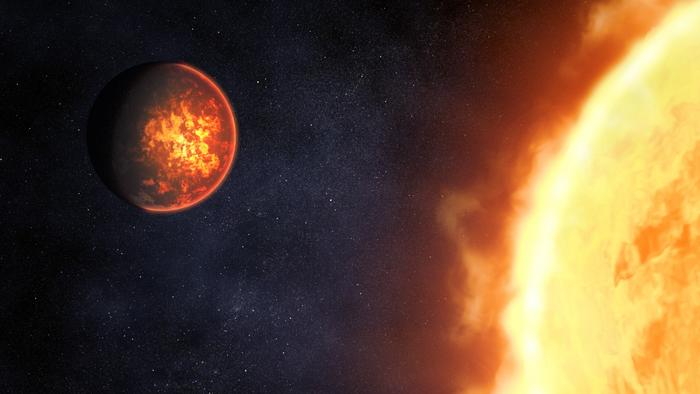UC Riverside astrophysicist Stephen Kane had to double-check his calculations when he discovered an exoplanet so extreme that it seemed almost impossible. The planet, located in a star system called HD 104067 about 66 light years away from our sun, is covered with so many active volcanoes that seen from a distance, it would take on a fiery, glowing-red hue.
“It was one of those discovery moments that you think, ‘wow, it’s amazing this can actually exist,'” Kane said. A paper detailing the discovery has been published in The Astronomical Journal.
A Planet Like Io, but on Steroids
The newly discovered planet, named TOI-6713.01, was found using data from NASA’s Transiting Exoplanet Survey Satellite (TESS), which searches for exoplanets that orbit the brightest stars in the sky, including those that could support life. While TOI-6713.01 is a rocky planet like Earth, it’s 30% larger and has more in common with Io, Jupiter’s rocky innermost moon and the most volcanically active body in our solar system.
“This is a terrestrial planet that I would describe as Io on steroids,” Kane said. “It’s been forced into a situation where it’s constantly exploding with volcanoes. At optical wavelengths you would be able to see a glowing, red-hot planet with a molten lava surface.”
Kane calculated that the surface temperature of TOI-6713.01 would be 2,600 degrees Kelvin, which is hotter than some stars.
Gravitational Forces Fuel Volcanic Activity
The extreme volcanic activity on TOI-6713.01 is caused by gravitational forces, similar to those that drive the volcanism on Io. In the HD 104067 system, two planets farther away from the star are forcing the inner rocky planet into an eccentric orbit around the star, squeezing it as it orbits and rotates.
Kane likens this scenario to racquetball, where the small rubber game ball bounces more and gets hotter as it is constantly hit with paddles. This effect is called tidal energy, a term used when referencing one body’s gravitational effect on another body.
Moving forward, Kane and his colleagues would like to measure the mass of the flaming planet and learn its density, which would tell them how much material is available to blow out of the volcanoes.
Kane said that tidal effects on planets haven’t historically been a big focus of exoplanet research, but perhaps that will change with this discovery. “This teaches us a lot about the extremes of how much energy can be pumped into a terrestrial planet, and the consequences of that,” Kane said. “While we know that stars contribute to the heat of a planet, the vast majority of the energy here is tidal and that cannot be ignored.”


